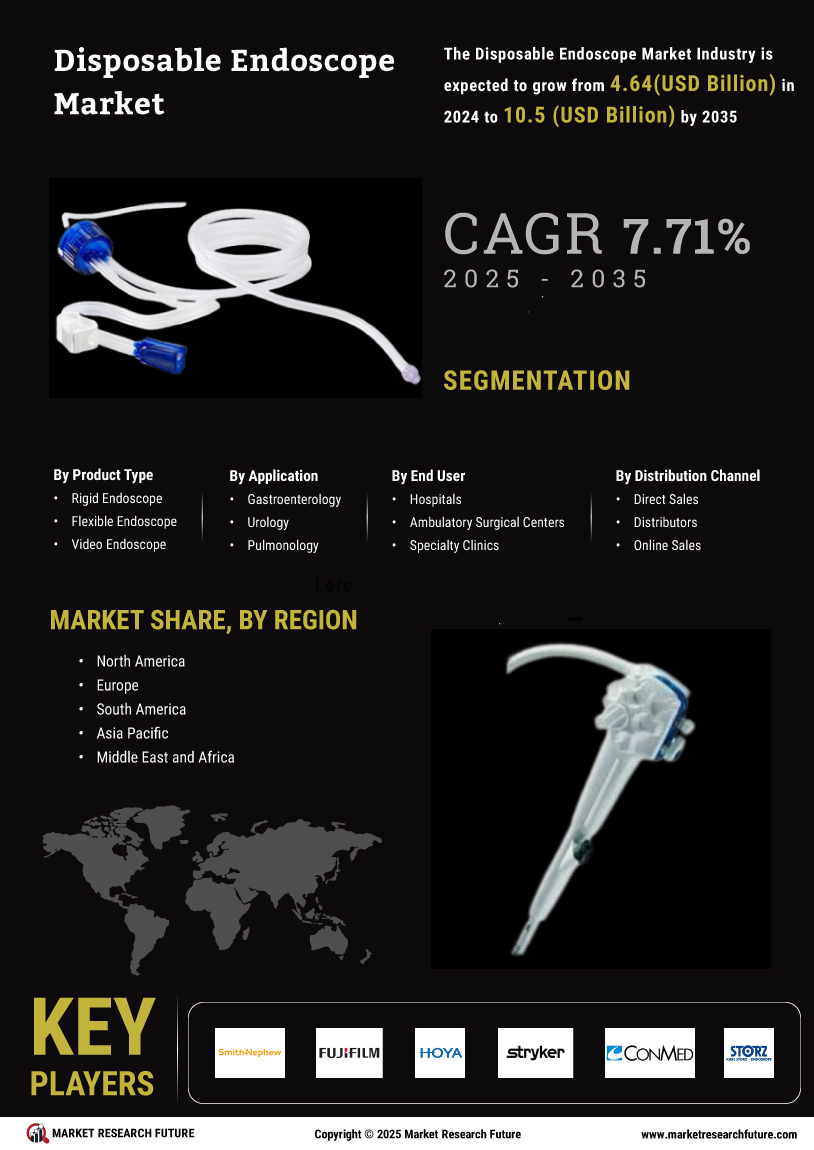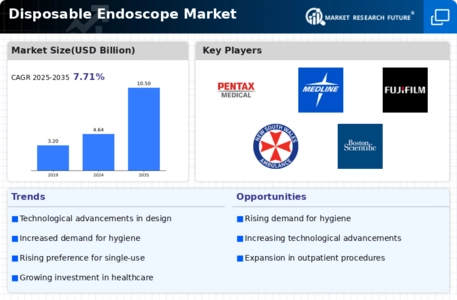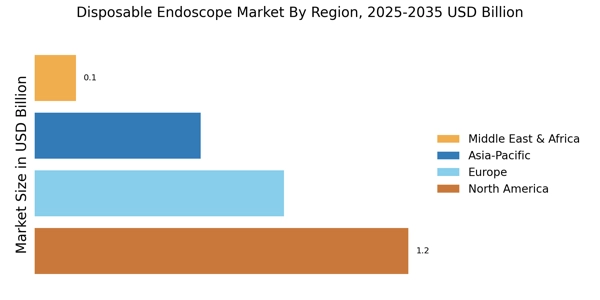Focus on Infection Prevention
Infection control remains a critical concern in healthcare settings, driving the growth of the Disposable Endoscope Market. The use of disposable endoscopes significantly reduces the risk of cross-contamination and hospital-acquired infections, which are prevalent with reusable instruments. Recent data indicates that healthcare-associated infections affect millions of patients annually, leading to increased healthcare costs and extended hospital stays. As hospitals and clinics prioritize patient safety, the demand for disposable endoscopes is likely to increase. This focus on infection prevention not only enhances patient care but also aligns with regulatory guidelines aimed at improving healthcare quality, further propelling the Disposable Endoscope Market.
Technological Innovations in Endoscopy
Technological advancements play a pivotal role in shaping the Disposable Endoscope Market. Innovations such as high-definition imaging, flexible designs, and enhanced maneuverability are making disposable endoscopes more effective and user-friendly. These advancements are attracting healthcare providers who seek to improve diagnostic accuracy and procedural efficiency. The integration of digital technologies, including artificial intelligence and machine learning, is also expected to enhance the capabilities of disposable endoscopes. As these technologies evolve, the market is likely to witness a surge in demand, with projections indicating a potential market growth of over 15% in the coming years, underscoring the importance of innovation in the Disposable Endoscope Market.
Regulatory Support for Disposable Devices
Regulatory bodies are increasingly supporting the use of disposable medical devices, including endoscopes, which is a significant driver for the Disposable Endoscope Market. Streamlined approval processes and favorable regulations are encouraging manufacturers to innovate and bring new products to market. This regulatory environment not only facilitates the introduction of advanced disposable endoscopes but also ensures that they meet safety and efficacy standards. As healthcare providers become more aware of the benefits of disposable devices, the market is expected to expand. The alignment of regulatory frameworks with industry needs suggests a promising future for the Disposable Endoscope Market, potentially leading to a market growth rate of around 12%.
Rising Demand for Minimally Invasive Procedures
The increasing preference for minimally invasive procedures is a notable driver in the Disposable Endoscope Market. Patients and healthcare providers alike favor these techniques due to their associated benefits, such as reduced recovery times and lower risk of complications. As a result, the demand for disposable endoscopes, which facilitate these procedures, is on the rise. According to recent estimates, the market for minimally invasive surgeries is projected to grow at a compound annual growth rate of approximately 10% over the next few years. This trend suggests that the Disposable Endoscope Market will continue to expand as more healthcare facilities adopt these technologies to enhance patient outcomes.
Expanding Applications in Various Medical Fields
The versatility of disposable endoscopes is driving their adoption across various medical specialties, which is a key factor in the growth of the Disposable Endoscope Market. These devices are increasingly utilized in gastroenterology, pulmonology, and urology, among other fields. The ability to use disposable endoscopes in diverse applications enhances their appeal to healthcare providers, as they can address a wide range of diagnostic and therapeutic needs. Market analysis indicates that the demand for disposable endoscopes in these specialties is expected to rise, with projections suggesting a growth rate of approximately 11% over the next few years. This expanding application spectrum is likely to bolster the Disposable Endoscope Market significantly.


















Leave a Comment